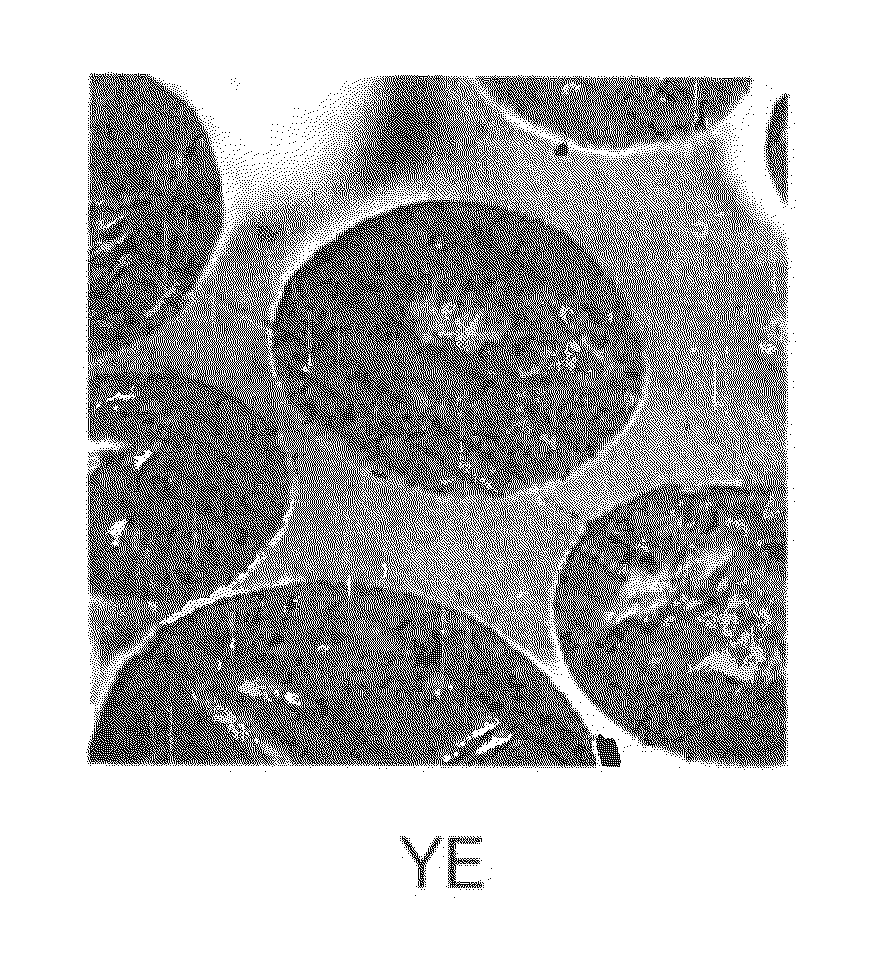Toner, method for producing the same, and developer
a technology of toner and developer, applied in the field of toner, can solve the problems of pulverization method, low yield, and limit the selection of toner materials, and achieve the effects of low temperature fixability, continuous and stably form, and excellent color dispersibility
- Summary
- Abstract
- Description
- Claims
- Application Information
AI Technical Summary
Benefits of technology
Problems solved by technology
Method used
Image
Examples
examples
[0213]Hereinafter, the present invention will be further described with reference to Examples and Comparative Examples, however, these Examples shall not be construed as limiting the scope of the present invention. Note that the unit “part(s) described below means “part(s) by mass”.
[0214]The weight average molecular weight (Mw) and the number average molecular weight (Mn) of resins were measured according to the following procedure.
[Measurement of Weight Average Molecular Weight (Mw)]
[0215]The mass average molecular weight of a binder resin was measured by GPC (Gel Permeation Chromatography) under the following conditions:[0216]Device: GPC-150C (manufactured by Waters Instruments, Inc.)[0217]Column: KF801 to KF807 (manufactured by Showdex Co.)[0218]Temperature: 40° C.[0219]Solvent: THF (tetrahydrofuran)[0220]Rate of flow: 1.0 mL / min[0221]Sample: 0.1 mL of a sample having a concentration of 0.05% to 0.6% was injected into the column.
[0222]Based on a molecular weight distribution of t...
example a1
Synthesis of Polyester Resin 1
[0235]Into a reaction vessel equipped with a thermometer, a stirrer, a condenser, and a nitrogen inlet tube, PO adduct of bisphenol A (product of propylene oxide being added to bisphenol A: hydroxyl value: 320 mgKOH / g) (443 parts), diethylene glycol (135 parts), terephthalic acid (422 parts), and dibutyltin oxide (2.5 parts) were added, reacted at 230° C. until the acid value reached 7 mgKOH / g. Further, the resin (410 parts) was charged to a reaction vessel equipped with a condenser tube, a stirrer and a nitrogen inlet tube, and isophorone diisocyanate (89 parts) and ethyl acetate (500 parts) were added and reacted at 100° C. for 5 hours to thereby obtain [Polyester Resin (hereinafter, described as “Pes1”)].
—Production of Crystalline Polyester Resin 1—
[0236][Pes1] (10 parts) was added to ethyl acetate (90 parts) so as to have a concentration of 10% by mass, and heated to 60° C. in a hot water bath. Subsequently, the hot water bath was switched off, and ...
example a2
Production of Cpes2
[0260][Cpes2] was produced in the same manner as in Example A1, except that in the production conditions for [Cpes1], the resin concentration was changed from 10% by mass to 1% by mass. Cpes2 was found to be sparingly soluble.
(Production of Polymerized Toner 2)
[0261]A toner was obtained in the same manner as in Example A1, except that [Masterbatch 2] was used, to which [Cpes2] had been added instead of [Cpes1] of [Masterbatch 1], thereby obtaining [Polymerized Toner 2].
PUM
| Property | Measurement | Unit |
|---|---|---|
| melting point | aaaaa | aaaaa |
| Tg | aaaaa | aaaaa |
| density | aaaaa | aaaaa |
Abstract
Description
Claims
Application Information
 Login to View More
Login to View More - R&D
- Intellectual Property
- Life Sciences
- Materials
- Tech Scout
- Unparalleled Data Quality
- Higher Quality Content
- 60% Fewer Hallucinations
Browse by: Latest US Patents, China's latest patents, Technical Efficacy Thesaurus, Application Domain, Technology Topic, Popular Technical Reports.
© 2025 PatSnap. All rights reserved.Legal|Privacy policy|Modern Slavery Act Transparency Statement|Sitemap|About US| Contact US: help@patsnap.com



